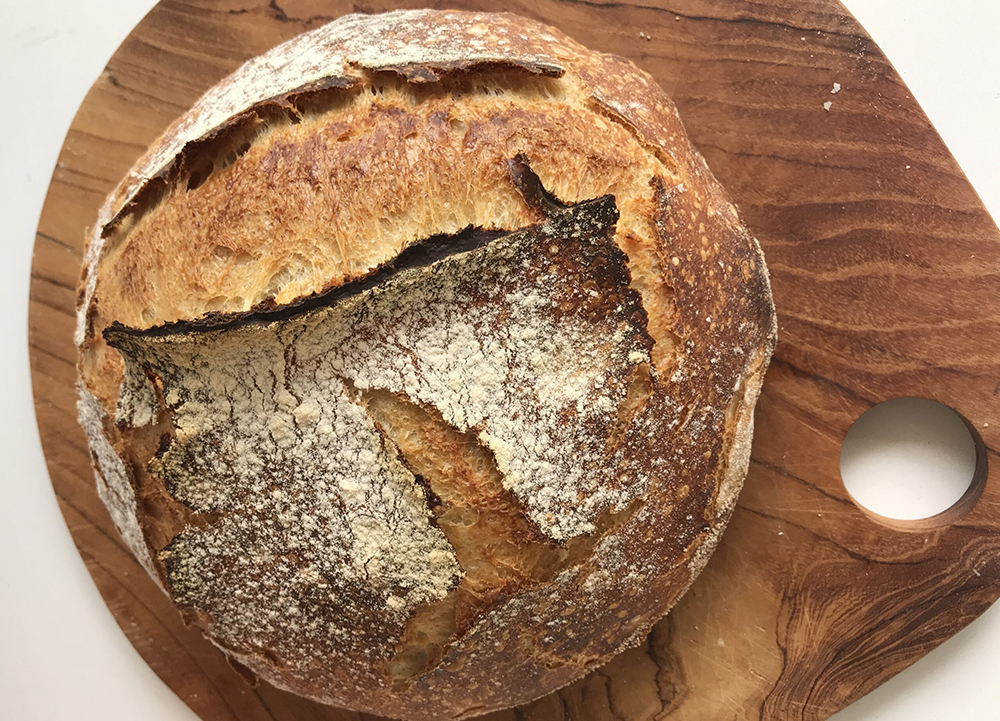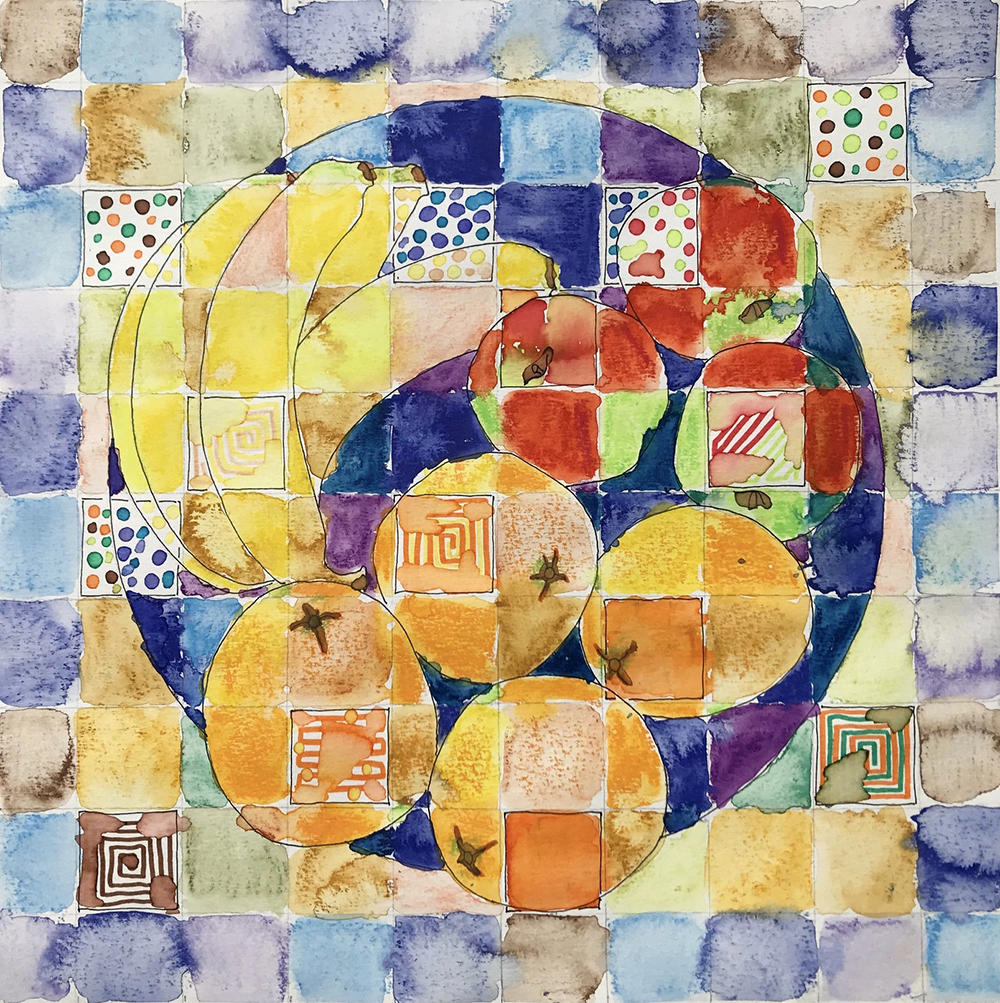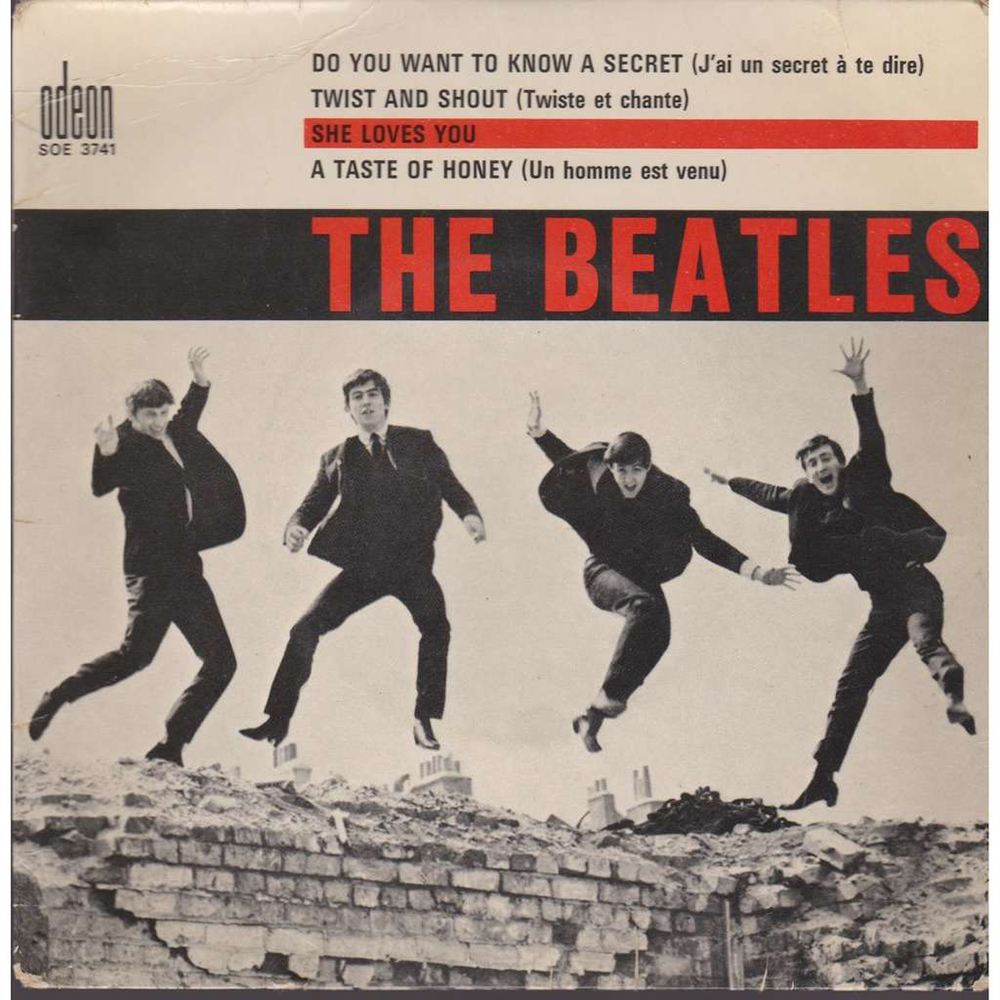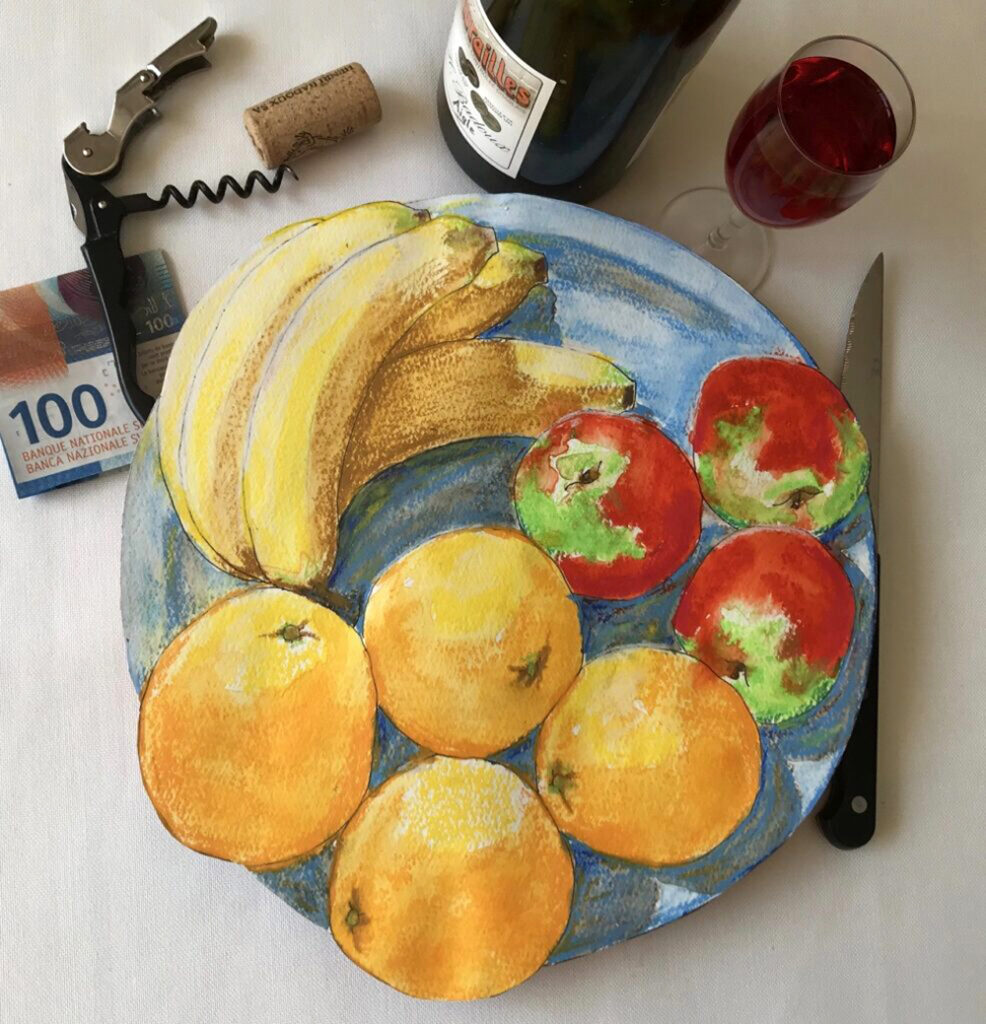Geneva, Wednesday 6 May 2020
There is great excitement in the kitchen. My wife’s sourdough starter, Boris, has delivered a lethal blow to my bubbly champion, Donald. Having changed on-line bread gurus, she put Boris through a much less disciplined regime that is clearly to his liking; together they have produced a pearl of a loaf. It has a light crusty crust and a creamy crumb with that delicious faint vinegary after taste. A masterpiece. I admit defeat. Donald will have to make do with pancake duty from here on.

Lockdown painting: I couldn’t let go of the theme of “Some Fruit on a Plate.” My wife described an earlier version as “insipid.” This one is “pretty.” Things are looking up!!

I saw a clip of Sir Paul McCartney, at 77 years of age, singing “Lady Madonna” for the One World: Together at Home concert. He dedicated his performance to his mother who was a nurse. In 1963, the Beatles twisted and shouted their way into our hearts, our homes and our lives. If you had told my mother then, that one day, the cheeky young scouser would become a “Sir,” she would have fallen to her knees and wept.

I was six years old in the year that Beatlemania swept the world. My first memory of this has my parents, my brothers and I watching the BBC news on a small, grainy, black and white TV. The Beatles were singing “She Loves You.” The “fans” (the first time we had heard the word; short for “fanatic,” don’t you know!) were screaming as if their young lives were under imminent threat. Nothing like this had ever been seen before. My father declared the whole thing disgraceful. “And on the BBC what’s more!!” My mother was too stunned to speak. We and all the other kids on the planet loved them and lapped it all up; above all, we loved how they shocked our parents. And the more the fab four shocked, the more the world went crazy for anything that had their stamp on it. Equally difficult for our parents to believe was that the Beatles actually had talent; albeit very cleverly marketed talent. Mum and Dad thought the music was anyone-could-do-that noise with absolutely no redeeming features. It was nothing like Glen Miller or Benny Goodman (let alone Mozart!).
So what was it that so shocked my parent’s generation other than the fact that the music was simply beyond the pale. The disapproval went way beyond. It was the whole package represented by these brazen young superstars. They were clearly about to hack away the moral pillars of society. These were the post World War II kids who had been too young to fight; they were just so ungrateful. They showed no respect to their elders and betters. They were unembarrassed by accusations of having sex before marriage. Believe it or not, those hair cuts were totally outrageous; any boy sporting his new Beatle-cut meant trouble from the get-go. And check out those heels on the Beatle-boots! The moment that my mother believed the world really was about to end was when it became known that John, Paul, George and Ringo, when invited to an audience with Her Majesty the Queen at Buckingham Palace, nipped into the gentlemen’s conveniences and smoked a joint.
In retrospect, Beatlemania was just one of the heralds of the huge social revolution that shook the establishment in the 1960s. It must have been in the mid-1990s when I asked my mother what it was that her generation had found so distasteful about the Beatles and their ilk. She had obviously given this considerable thought. She said with clarity “They terrified us. They threatened our values. They threatened our society and everything that was important to us. We couldn’t see any future for you kids in a world that adored them.” Fair enough!
If, in ten years time, you were to ask me what three things have really changed western society since World War II, I might say the rock and pop culture. I would certainly say the internet. I wonder if I will say COVID-19. With one song performed live on-line, Sir Paul McCartney is entwined in all three.
And how about this….? Donald Trump has declared that his pandemic task force will now focus on “re-opening” the economy just a day after upping the estimate for total American COVID-19 deaths from 60,000 to 100,000. Yesterday, he left the White House for the first time in weeks and made a highly publicised visit to a mask-making company. Music blared as he made his tour and many commentators have pointed out that the factory’s chosen soundtrack was inappropriate: the theme song to the 1973 James Bond film “Live and Let Die” written and performed by…. you got it, Sir Paul McCartney.
My wife beat me in today’s putting competition 2 and 1. The running total is now 20 – 11 in my favour.



